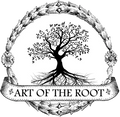Iron. Nearly every ancient culture venerates it and let's face it, they named an entire age after it. The Iron Age, a category of our historical history known to have entered the picture post-1300 B.C. (although in some cultures it was utilized far earlier). Its magic was in it's strength both for weapons and in agriculture. And iron was considered magical! Many cultures believed it had the ability to ward off evil. After all, It protected warriors and their families and helped crops flourish. For example, If an invasion occurred and you happened to have a solid iron weapon, you would be in much better shape than if you had a bronze or stone one.
History Of The Lucky Horseshoe
Enter the lucky horseshoe. The magical talisman most likely entered the picture much earlier. Try Ancient Greece, 4th century BC. As for the horseshoe, well it gave the equine added protection and strength in flight. Even today, it is considered one of the greatest symbols of luck and protection, particularly when hung above one's door with the points facing up (although some cultures prefer to hang the points down). An upright horseshoe may remind you of the crescent moon, another ancient symbol. And it's very ancient. The Babylonians associated it with their God Sin, the god of the moon who was most often depicted with the bull. Yes, the horns of a bull clearly have a similar resemblance to a crescent moon. Many draw the connection of the crescent moon to fertility due to its association with cattle, the lunar cycles, and of course, menstrual cycles. When one relates this to the much more contemporary ritual acts of Hoodoo, it may draw a connection to the power of using one's own menstrual blood in DIY love spells. Just a thought.....
The Horseshoe In Ancient Rome And Christianity
Back to the horseshoe. Enter the Romans who took the horseshoe one step further. They refined its use on their fellow equestrians but preserved its use as a magical talisman. Of course, iron horseshoes are forged with fire. Those who have done some research on magical elements may know that Fire is considered to be protective. Furthermore, the Romans venerated metalwork and even had their own God associated with it, aka Vulcan who forged with “fire”. The Romans then carried it into Christianity and Europe for that matter. In European folklore, the horseshoe was believed to ward off “faeries” and supernatural beings due to the fact that spirits simply do not like cold Iron. When the Middle Ages rolled in, superstitions were at an all-time high, particularly when it came to witches! A horseshoe on the door was believed to protect a home from witches who flew on brooms. Why? Well, apparently witches didn't like horses too much. Why the door? That may be apparent but in the Middle Ages, witches could also enter through chimneys and windows, particularly in the form of a black cat or other animals. If you get a chance, read the story of St. Dunstan and the devil. It's a classic example of how Christianity borrowed an ancient symbol and made it their own.
The Horseshoe In Judaism and Ancient Egypt
The symbol of the horseshoe nailed onto the door may have its roots in the ancient Hebrews. Passover to be exact, and this goes all the way back to when Ancient Egyptians had enslaved the Jews. The myth, at least according to Exodus, goes something like this: The Jews had migrated to Egypt. The Pharaoh, being acutely aware of the growing Jewish population decides to enslave the Jews. An order is called by the Pharaoh that all first-born sons of Jews be killed. Enter a firstborn male, the son of a Jewish woman. As a means to avoid execution, she places her child in a basket and floats him down the Nile river. He is found by the Pharaoh's daughter, who names him Moses. Moses sees the suffering of the Hebrew people. Moses goes to God and God tells him to have every Israelite kill a lamb and put its blood on their front doors so God may' pass over" their homes when he comes down to take every firstborn child. This myth has made an impact, particularly on the Christians of the Middle Ages who believed that protection on the front door served as a spell for protection against a great evil. Even today, some cultures will still place the blood on their doors, however it's usually the blood from a chicken.
Horseshoe Symbolism In Modern Magicks

Today, the horseshoe remains an important symbol of protection and luck. It is even commonly worn as a talisman on the neck and wrist. I have an iron railroad spike behind my door, and quite frankly I'm not opposed to putting a horseshoe up there as well. Horseshoes aren't just for the door either. They can also be hung over fireplaces (which no doubt stems from the fear of witches from the Middle Ages). For the Hoodoo fan, get some Moses or Holy Oil and anoint that horseshoe. Place it above your door with three iron nails or if you happen to have a horseshoe with seven holes, even better! Put seven nails in there. Hang one in your bedroom to prevent nightmares or to protect you from the wandering bad spirit. FYI, if you have the opportunity to find an old horseshoe, it's believed to be much more powerful than a new one. So hit those flea markets and antique stores! Iron horseshoes, by the way, are also a traditional wedding gift given to new brides and grooms for good luck in their marriage. So if you're stumped on what to get your friend for their wedding, try a good old-fashioned iron horseshoe. Chances are it may do much better good than your typical coffee maker.






Leave a comment